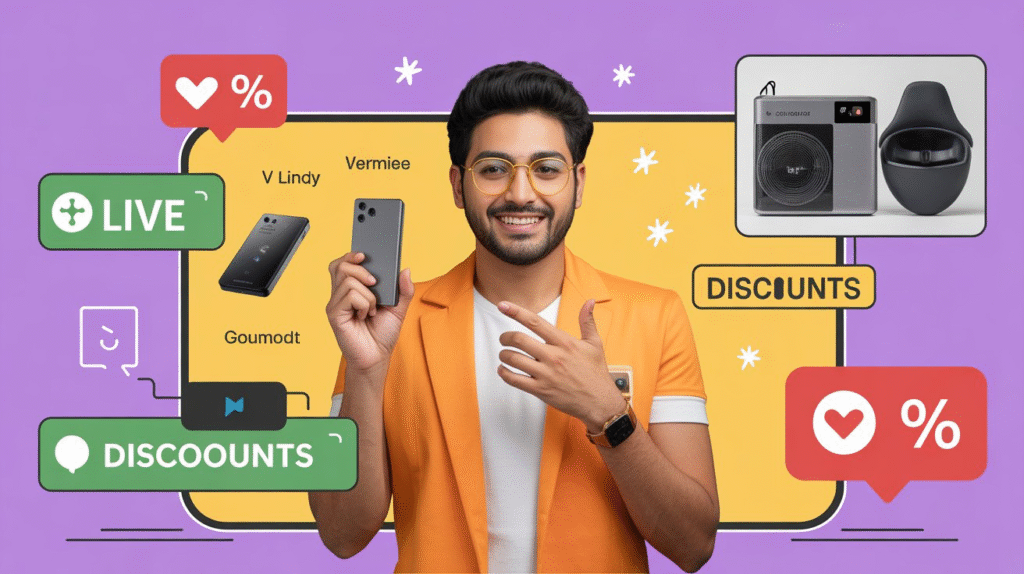
In the past few years, the Indian digital landscape has undergone a major transformation. What was once limited to casual browsing has now evolved into a powerful commerce-driven environment. Social media platforms are no longer just spaces for entertainment and networking.
They have become shopping destinations where millions of Indians discover, engage, and purchase products in real time. But why exactly are Indian shoppers more inclined to buy directly on social media instead of traditional e-commerce platforms? Let’s explore the reasons behind this shift and its impact on business growth.
The Role of Community and Trust
Indian shoppers are highly influenced by trust and word-of-mouth recommendations. Social media creates an environment where friends, family, and influencers actively share reviews, product experiences, and suggestions.
This community-driven validation plays a big role in building confidence before making a purchase.
Unlike standard online stores, social platforms allow buyers to see authentic user-generated content, live demonstrations, and customer interactions that reassure them of their decisions. This ecosystem not only benefits buyers but also drives significant business growthfor brands and small businesses across India.
Convenience of Seamless Shopping
One of the main reasons Indian shoppers prefer buying directly on social media is convenience. Platforms like Instagram, Facebook, and WhatsApp have introduced integrated shopping tools that reduce the gap between product discovery and purchase.
Customers can explore, engage, and pay without leaving the platform. This smooth journey eliminates extra steps, offering an experience that feels natural and effortless. The quick checkout process combined with relatable visual storytelling makes shopping easier and far more appealing.
Live Commerce and Real-Time Interaction
Live commerce is revolutionizing online shopping in India. Through interactive sessions, brands and sellers showcase products in real time, answer questions instantly, and offer exclusive deals. This approach replicates the physical market experience where buyers interact directly with sellers.
For Indian shoppers who value engagement and personal connection, live shopping is more persuasive than static listings. It blends entertainment with commerce, creating a sense of urgency and excitement that traditional e-commerce websites struggle to deliver.
Influence of Local and Regional Sellers
India’s diverse culture and regional preferences are perfectly matched with the social commerce model. Local sellers use platforms like Facebook Marketplace and WhatsApp groups to connect with nearby communities.
Buyers feel more comfortable purchasing from someone in their own city or region because it ensures faster delivery and trust in authenticity. Social media gives these small businesses an equal playing field to compete with larger brands, boosting local economies and fostering entrepreneurship.
The Impact on Business Growth in India
This rapid shift toward social commerce has created opportunities for both established brands and startups. Businesses can build direct relationships with their target audience, bypassing traditional middlemen and advertising channels.
The interactive nature of social media allows companies to gather feedback, test products, and adjust strategies quickly. Agencies like Oceans Ad Agency are helping businesses tap into this opportunity by designing campaigns that not only capture attention but also drive measurable results.
Future of Social Commerce in India
The future of shopping in India is deeply tied to social commerce. With affordable internet access, rising smartphone adoption, and growing digital literacy, more consumers are expected to engage in this trend.
As platforms continue to innovate with features like augmented reality trials, AI-driven recommendations, and influencer-led campaigns, the shopping experience will only become more personalized and immersive. Businesses that adapt quickly will enjoy sustained success and long-term growth in this evolving market.
Conclusion
Indian shoppers are increasingly drawn to buying directly on social media because of trust, convenience, and real-time engagement. This shift is transforming how brands connect with their customers and how businesses scale in a competitive market.
For companies looking to accelerate their presence and achieve strong results, leveraging the power of social commerce is no longer optional—it is essential.
